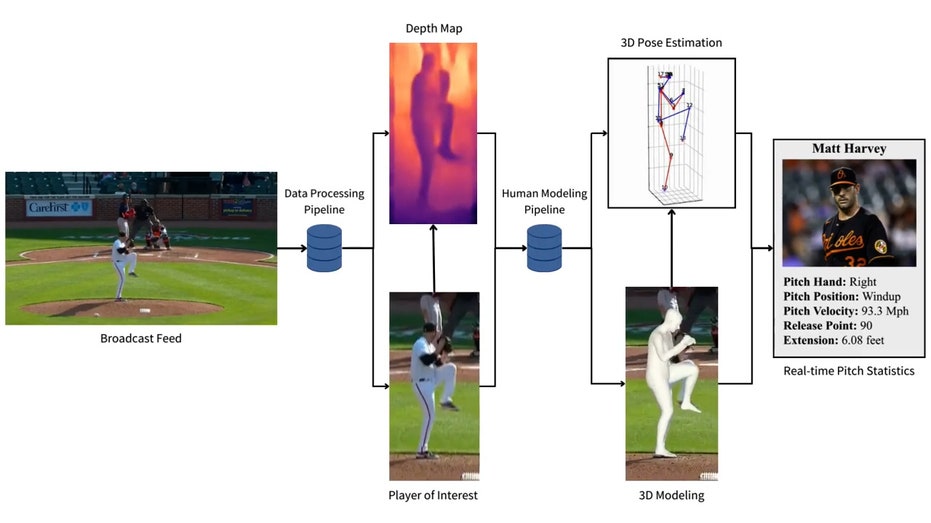
Electric Hydrofoil Surfboards Market
As per MRFR analysis, the Electric Hydrofoil Surfboards Market Size was estimated at 45.94 (USD Billion) in 2024. The Electric Hydrofoil Surfboards Market Industry is expected to grow from 48.62 (USD Billion) in 2025 to 80.89 (USD Billion) till 2034, at a CAGR (growth rate) is expected to be around 5.82% during the forecast period (2025 – 2034).
The electric hydrofoil surfboard market is an emerging segment within the water sports industry, combining the thrill of surfing with cutting-edge technology. Electric hydrofoil surfboards use a hydrofoil design that lifts the board above the water’s surface, allowing riders to glide smoothly and effortlessly, powered by an electric motor. This innovation offers a unique riding experience, making it increasingly popular among water sports enthusiasts.
Significance of the Electric Hydrofoil Surfboards Market
The electric hydrofoil surfboard market is significant for its potential to revolutionize water sports. By providing a new way to experience surfing, these boards attract a broader audience, including those who may not have traditional surfing skills. The market contributes to the growth of recreational water activities and promotes innovation in watercraft design and technology.
Get Free Sample Report for Detailed Market Insights: https://www.marketresearchfuture.com/sample_request/26308
Current Trends
Several trends are currently shaping the electric hydrofoil surfboard market:
Rising Popularity of Water Sports: An increasing interest in water sports and outdoor activities is driving demand for innovative products like electric hydrofoil surfboards.
Technological Advancements: Continuous improvements in battery technology, motor efficiency, and design are enhancing the performance and accessibility of electric hydrofoil surfboards.
Sustainability Focus: As consumers become more environmentally conscious, there is a growing demand for eco-friendly water sports equipment, including electric hydrofoil surfboards that produce no emissions during use.
Market Drivers
The growth of the electric hydrofoil surfboard market can be attributed to several key drivers:
Innovative Riding Experience
Electric hydrofoil surfboards offer a unique and exhilarating experience, allowing riders to glide above the water and achieve higher speeds than traditional surfing. This innovation attracts thrill-seekers and water sports enthusiasts.
Accessibility for Beginners
The ease of use associated with electric hydrofoil surfboards makes them accessible to beginners. The electric motor provides assistance, allowing users to learn and enjoy riding without needing advanced surfing skills.
Advancements in Battery Technology
Improvements in battery technology have led to longer ride times and faster charging capabilities, making electric hydrofoil surfboards more practical for consumers. This advancement enhances the overall user experience.
Growing Interest in Eco-Friendly Products
As consumers increasingly prioritize sustainability, electric hydrofoil surfboards, which produce no emissions during operation, appeal to environmentally conscious buyers looking for green alternatives in water sports.
Key Companies
Several major players dominate the electric hydrofoil surfboard market, each contributing to its growth and innovation:
Lift Foils
Lift Foils is a pioneer in the electric hydrofoil surfboard market, known for its high-quality boards and advanced technology. The company offers a range of models catering to different skill levels and preferences.
Fliteboard
Fliteboard is another leading manufacturer of electric hydrofoil surfboards, recognized for its innovative designs and performance. The company focuses on creating products that deliver an exceptional riding experience.
eFoil
eFoil, developed by Lift Foils, has gained popularity for its user-friendly design and performance. The brand emphasizes accessibility and fun, appealing to a wide range of consumers.
Waydoo
Waydoo is known for producing affordable electric hydrofoil surfboards without compromising on quality. The company’s commitment to innovation and performance has made it a notable player in the market.
Radinn
Radinn specializes in electric surfboards and hydrofoils, offering customizable options and advanced technology. The company focuses on providing a unique riding experience for enthusiasts.
You can buy this market report at: https://www.marketresearchfuture.com/checkout?currency=one_user-USD&report_id=26308
Market Restraints
Despite its growth potential, the electric hydrofoil surfboard market faces several challenges:
High Initial Costs
The cost of electric hydrofoil surfboards can be relatively high, which may deter some potential buyers. The price of advanced technology and materials contributes to the overall expense.
Limited Awareness and Education
As a relatively new product category, there may be limited awareness and understanding of electric hydrofoil surfboards among consumers. Educating potential buyers about the benefits and features is essential for market growth.
Regulatory Challenges
Regulatory issues related to watercraft use and safety can pose challenges for manufacturers and consumers. Compliance with local laws and regulations is necessary to ensure safe and legal operation.
Market Segmentation Insights
The electric hydrofoil surfboard market can be segmented based on several criteria:
Type of Board
All-in-One Boards: Complete packages that include the board, battery, and remote control, designed for ease of use.
Modular Boards: Boards that allow for customization and upgrades, appealing to enthusiasts who want to personalize their equipment.
Skill Level
Beginner Boards: Designed for ease of use, these boards often feature stability and user-friendly controls.
Intermediate and Advanced Boards: Offer more performance-oriented features, catering to experienced riders seeking speed and agility.
Geographic Regions
North America: Dominates the electric hydrofoil surfboard market due to high consumer interest in water sports and outdoor activities.
Europe: Experiencing growth driven by increasing participation in water sports and a focus on sustainable products.
Asia-Pacific: Emerging as a significant market, particularly in countries with strong water sports cultures, such as Australia and Japan.
To explore more market insights, visit us at: https://www.marketresearchfuture.com/reports/electric-hydrofoil-surfboards-market-26308
Future Scope
The future of the electric hydrofoil surfboard market looks promising, with several emerging trends and innovations expected to drive growth:
Technological Innovations
Continued advancements in battery technology, motor efficiency, and materials will enhance the performance and accessibility of electric hydrofoil surfboards, attracting more consumers to the market.
Expansion of Rental Services
The growth of rental services for electric hydrofoil surfboards, especially in tourist destinations, will provide greater access for consumers who may not wish to purchase their own boards.
Increased Focus on Safety Features
As the market matures, manufacturers will likely prioritize the development of advanced safety features, such as automatic shut-off systems and improved stability controls, to enhance user confidence.
Collaborations and Partnerships
Collaborations between manufacturers and water sports brands or resorts will help promote electric hydrofoil surfboards, increasing visibility and accessibility for potential buyers.
The electric hydrofoil surfboard market is poised for significant growth, driven by the demand for innovative water sports experiences, advancements in technology, and a focus on sustainability. While challenges such as high costs and regulatory issues exist, the opportunities for innovation and market expansion are vast. As consumer interest continues to rise, electric hydrofoil surfboards will likely become a popular choice for water sports enthusiasts seeking thrilling and eco-friendly experiences on the water.
More Related Reports from MRFR Library:
Air Quality Monitoring Market: https://www.marketresearchfuture.com/reports/air-quality-monitoring-market-8859
Automotive Air Spring Market: https://www.marketresearchfuture.com/reports/automotive-air-spring-market-27547
Automotive Air Vent Assembly Market: https://www.marketresearchfuture.com/reports/automotive-air-vent-assembly-market-27555
Automotive Augmented Reality Hud Market: https://www.marketresearchfuture.com/reports/automotive-augmented-reality-hud-market-27509
Automotive Balance Shaft Market: https://www.marketresearchfuture.com/reports/automotive-balance-shaft-market-27570
Automotive Wire Market: https://www.marketresearchfuture.com/reports/automotive-wire-market-27650
About Market Research Future:
Market Research Future (MRFR) is a global market research company that takes pride in its services, offering a complete and accurate analysis regarding diverse markets and consumers worldwide. Market Research Future has the distinguished objective of providing the optimal quality research and granular research to clients. Our market research studies by products, services, technologies, applications, end users, and market players for global, regional, and country level market segments, enable our clients to see more, know more, and do more, which help answer your most important questions.
Market Research Future (Part of Wantstats Research and Media Private Limited)
99 Hudson Street, 5Th Floor
New York, NY 10013
United States of America
+1 628 258 0071 (US)
+44 2035 002 764 (UK)
Email: mailto:sales@marketresearchfuture.com
Website: https://www.marketresearchfuture.com
This release was published on openPR.

























 + How signing Turner & waiving Dame impacts the Bucks | NBA Today
+ How signing Turner & waiving Dame impacts the Bucks | NBA Today


































